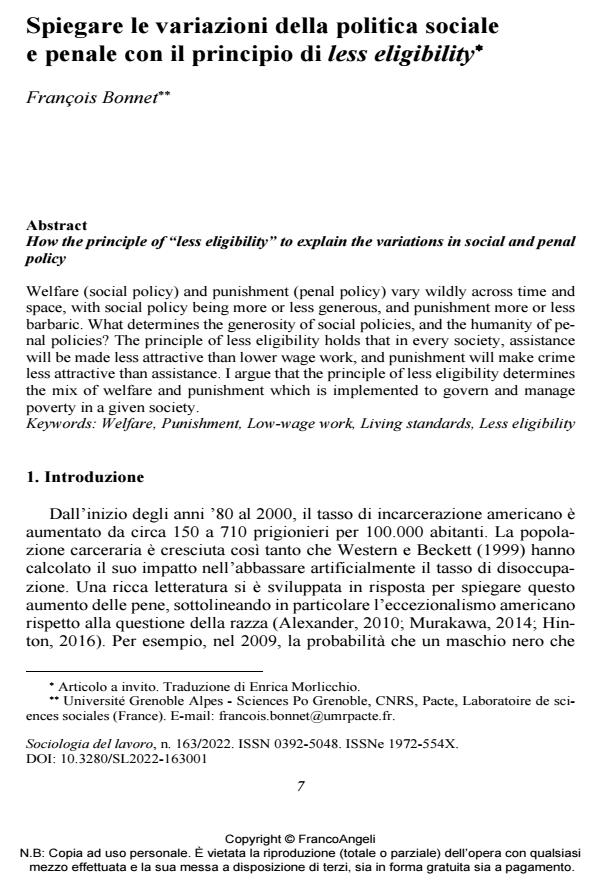Spiegare le variazioni della politica sociale e penale con il principio di less eligibility
Titolo Rivista SOCIOLOGIA DEL LAVORO
Autori/Curatori François Bonnet
Anno di pubblicazione 2022 Fascicolo 2022/163
Lingua Italiano Numero pagine 19 P. 7-25 Dimensione file 223 KB
DOI 10.3280/SL2022-163001
Il DOI è il codice a barre della proprietà intellettuale: per saperne di più
clicca qui
Qui sotto puoi vedere in anteprima la prima pagina di questo articolo.
Se questo articolo ti interessa, lo puoi acquistare (e scaricare in formato pdf) seguendo le facili indicazioni per acquistare il download credit. Acquista Download Credits per scaricare questo Articolo in formato PDF

FrancoAngeli è membro della Publishers International Linking Association, Inc (PILA)associazione indipendente e non profit per facilitare (attraverso i servizi tecnologici implementati da CrossRef.org) l’accesso degli studiosi ai contenuti digitali nelle pubblicazioni professionali e scientifiche
Il welfare (politica sociale) e la punizione (politica penale) variano notevolmente nel tempo e nello spazio, con la politica sociale più o meno generosa e la punizione più o meno barbara. Cosa determina la generosità delle politiche sociali e l’umanità delle politiche penali? Il principio di less eligibility sostiene che in ogni società l’assistenza sarà resa meno attraente del lavoro a basso salario e la punizione renderà il crimine meno attraente dell’assistenza. Io sostengo che il principio di less eligibility determina il mix di assistenza e punizione che viene attuato per governare e gestire la povertà in una data società.
Parole chiave:welfare, punizione, lavoro a basso salario, standard di vita, less eligibility
François Bonnet, Spiegare le variazioni della politica sociale e penale con il principio di less eligibility in "SOCIOLOGIA DEL LAVORO " 163/2022, pp 7-25, DOI: 10.3280/SL2022-163001